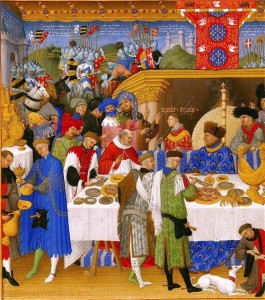Happy (Medieval) New Year’s!
Last month, we highlighted some holiday food traditions of the medieval period. While we’ll probably never get used to some of the recipes in that medieval cookbook, we certainly had a fun time reading about them! This month, we’re going to look at another holiday: New Year’s! Did you know that Julius Caesar declared January 1st the start of the new year because the month is named after the Roman god Janus, who was said to look into both the future and past with his two faces? Here are some facts about how people in the medieval period celebrated New Year’s. 
- The Council of Tours, a gathering of medieval Roman Catholic officials, abolished January 1st as the start of a new year in 567. It took Europe 561 years to agree that January 1st could be considered the start of the new year. The first nations to accept the date were Eastern European nations in 1362.
- Before January 1st was adopted, countries in medieval times observed New Year’s on different days. For example, some countries chose to celebrate on December 25th while others considered March 25tgh the start of the new year.
- England, in particular, had a tough time deciding when they wanted to celebrate the new year. Initially, they chose December 25th. Once William the Conqueror came into power, the date was changed to January 1st. Later, it was changed again to March 25th. It wasn’t until 1752 when January 1st became the final choice.